NCERT Solutions Class 9 Science Chapter 6 - Tissues
NCERT Solutions for Class 9 Science Chapter 6 – Tissues are essential for understanding key Biology concepts in the CBSE curriculum. These well-structured answers help students grasp topics like plant and animal tissues, their structure, functions, and classifications. Designed as per the latest syllabus, these solutions strengthen conceptual clarity and improve exam preparation. Ideal for revision and practice, they encourage logical thinking and scientific understanding, making them a valuable study tool for scoring well in Class 9 Science exams.
NCERT Solutions Class 9 Science – Tissues – Exercise Images
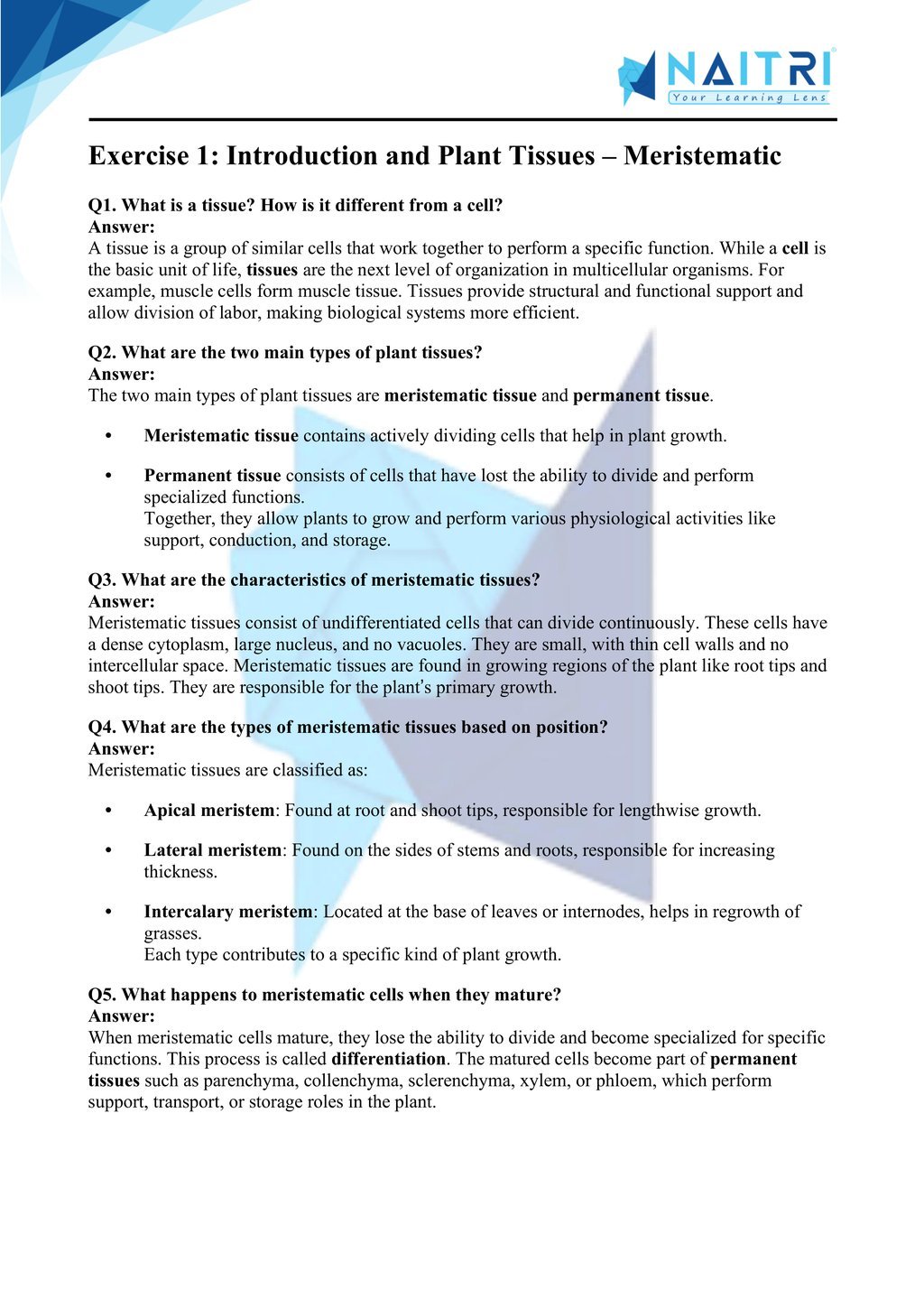
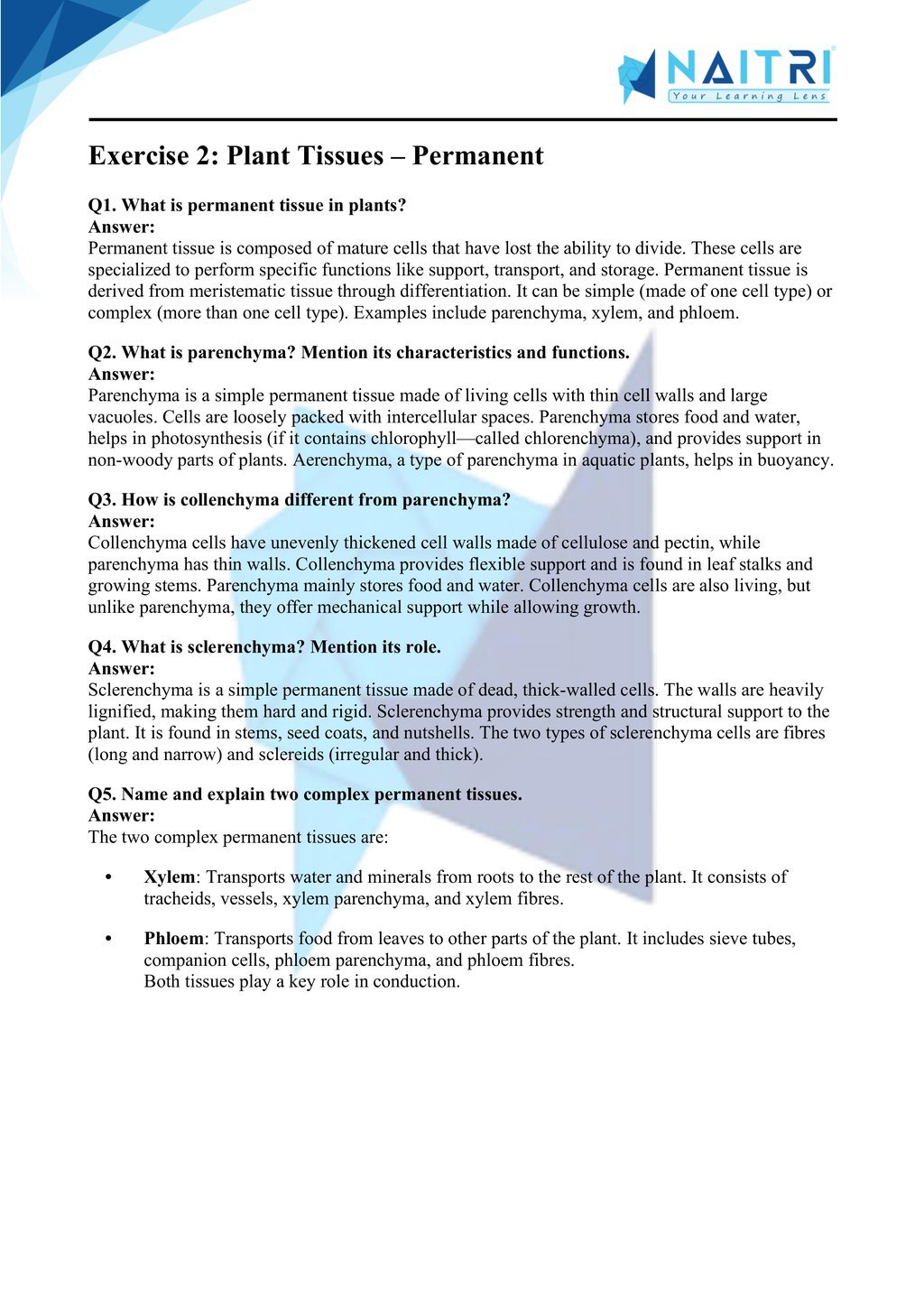
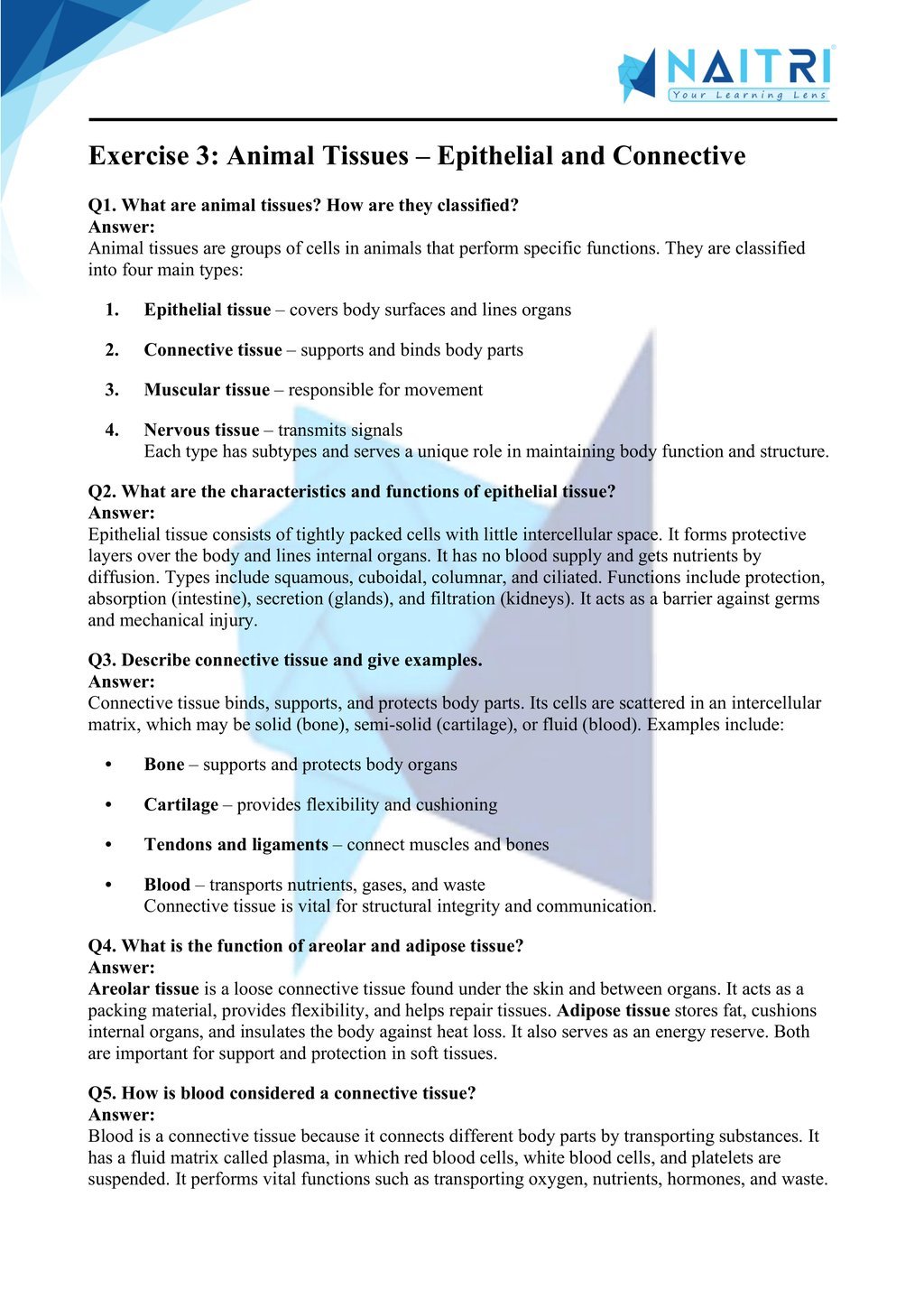
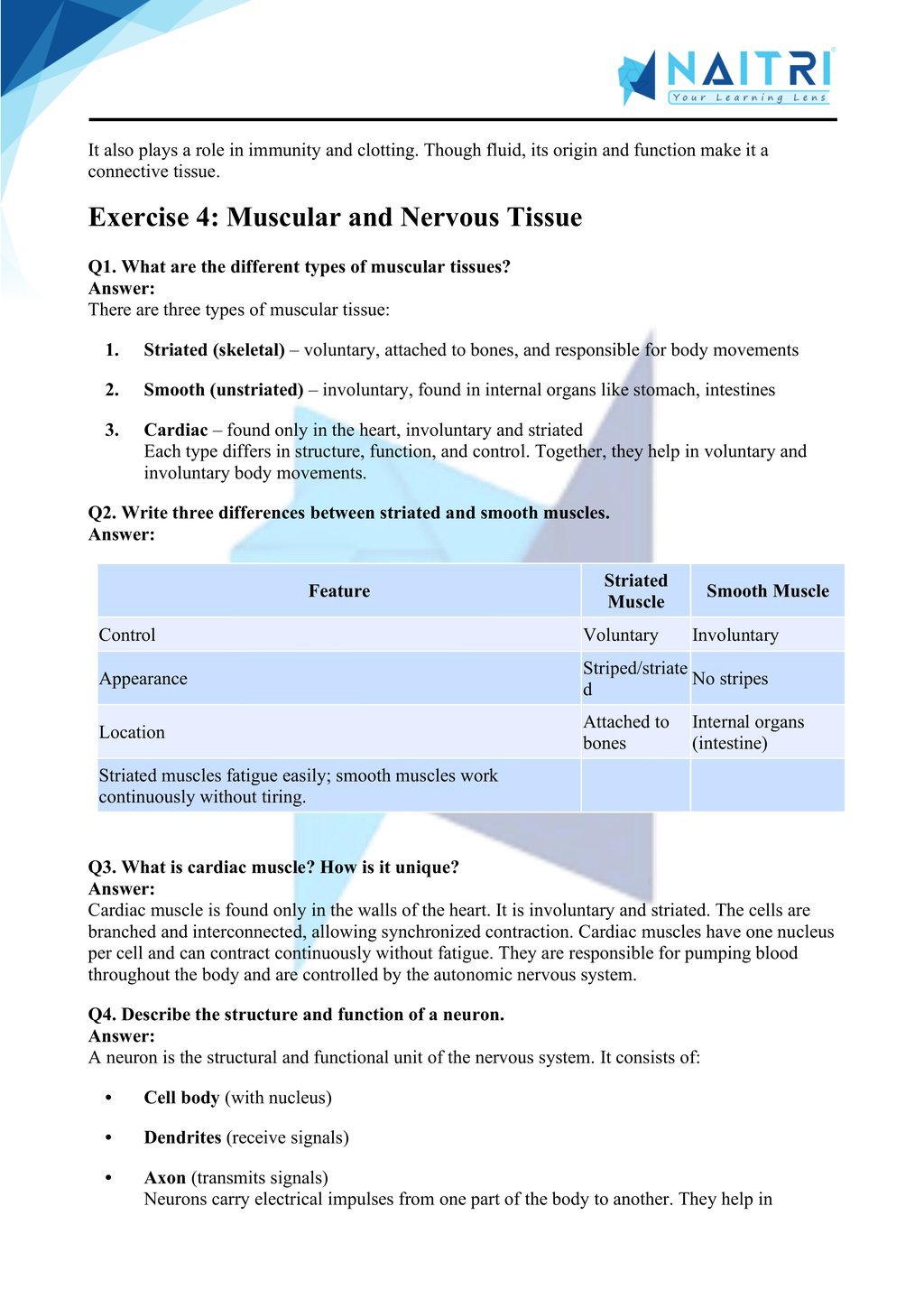
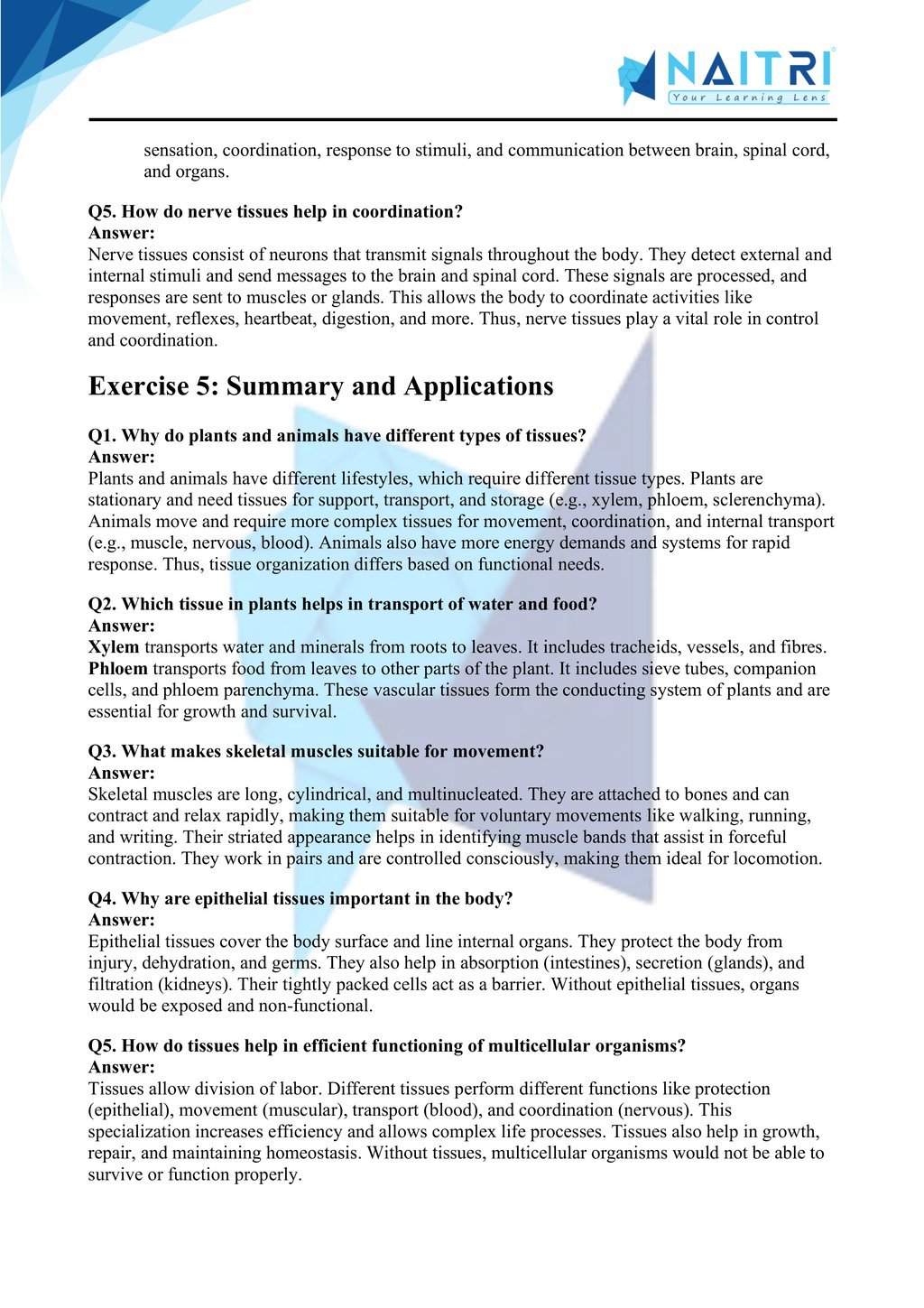
Experience Science Like Never Before – With AR!
Understanding Tissues is now more exciting and immersive! With the NAITRI App, you can explore complex science concepts through Augmented Reality (AR). See muscle fibers contract, plant tissues function, and cellular structures interact — right in front of you. Our AR-powered lessons make learning interactive, 3D, and fun, helping you retain concepts better and enjoy every topic.



Visualize . Interact . Understand . The future of learning is here
Tissues – Important Questions with Answers
1. What is a tissue?
Answer: A tissue is a group of similar cells that perform a specific function.
2. Name the two types of plant tissues.
Answer: Meristematic tissue and Permanent tissue.
3. What is meristematic tissue?
Answer: Meristematic tissue consists of actively dividing cells found in growing parts of the plant.
4. Name the types of meristematic tissues based on location.
Answer:
Apical meristem
Lateral meristem
Intercalary meristem
5. What is the function of apical meristem?
Answer: It helps in the growth of stems and roots at their tips.
6. What is permanent tissue?
Answer: Permanent tissue is made of mature cells that have lost the ability to divide and perform specific functions.
7. Name two types of permanent tissues.
Answer:
Simple permanent tissue
Complex permanent tissue
8. Give examples of simple permanent tissues.
Answer: Parenchyma, Collenchyma, and Sclerenchyma.
9. What is parenchyma?
Answer: Parenchyma is a living, simple permanent tissue that stores food and performs photosynthesis.
10. What is collenchyma and its function?
Answer: Collenchyma is a living tissue that provides flexibility and mechanical support to plants.
11. What is sclerenchyma?
Answer: Sclerenchyma is a dead tissue that provides strength and rigidity to the plant.
12. What are complex permanent tissues?
Answer: Tissues made of different types of cells working together for a common function, e.g., Xylem and Phloem.
13. Name the components of xylem.
Answer: Tracheids, Vessels, Xylem parenchyma, and Xylem fibres.
14. What is the main function of xylem?
Answer: To transport water and minerals from roots to different parts of the plant.
15. Name the components of phloem.
Answer: Sieve tubes, Companion cells, Phloem parenchyma, and Phloem fibres.
16. What is the main function of phloem?
Answer: To transport food from leaves to other parts of the plant.
17. What is the basic unit of nervous tissue?
Answer: Neuron.
18. Name the four types of animal tissues.
Answer:
Epithelial tissue
Connective tissue
Muscular tissue
Nervous tissue
19. What is epithelial tissue?
Answer: Epithelial tissue covers body surfaces and lines internal organs and cavities.
20. Name two types of epithelial tissues.
Answer:
Squamous epithelium
Columnar epithelium
21. What is connective tissue? Give examples.
Answer: Connective tissue connects and supports body parts.
Examples: Blood, Bone, Cartilage, Ligaments, Tendons.
22. What is muscular tissue?
Answer: Muscular tissue helps in movement by contraction and relaxation of muscle fibers.
23. Name three types of muscle tissues.
Answer:
Striated (skeletal) muscle
Smooth muscle
Cardiac muscle
24. What is nervous tissue?
Answer: Nervous tissue carries messages between different parts of the body and the brain through nerve impulses.
25. How is cardiac muscle different from skeletal muscle?
Answer:
Cardiac muscles are involuntary and found only in the heart, while skeletal muscles are voluntary and attached to bones.
Cardiac muscles have branching fibers with intercalated discs.
Tissues builds on the concept of cells by explaining how they group together to perform specific functions. The chapter distinguishes between plant and animal tissues, such as parenchyma, collenchyma, muscle, and nervous tissue. It emphasizes the structural and functional organization in multicellular organisms. This chapter helps students understand how the human body and plants are organized efficiently for survival and growth.
Related Chapters You May Like
- Chapter – 1 Matter in Our Surroundings
- Chapter – 2 Is Matter Around Us Pure
- Chapter – 3 Atoms and Molecules
- Chapter – 4 Structure of the Atom
- Chapter – 5 The Fundamental Unit of Life
- Chapter – 7 Motion
- Chapter – 8 Force and Laws of Motion
- Chapter – 9 Gravitation
- Chapter – 10 Work and Energy
- Chapter – 11 Sound
- Chapter – 12 Improvement in Food Resources
Download Naitri App
Easy, Visual Learning — Right on Your Phone
Learn with Augmented Reality! The Naitri app makes CBSE and MP Board concepts interactive and fun — even in low-resource settings. Watch lessons, complete homework, take tests, and track progress — all in one place. Anytime. Anywhere.
Available on








